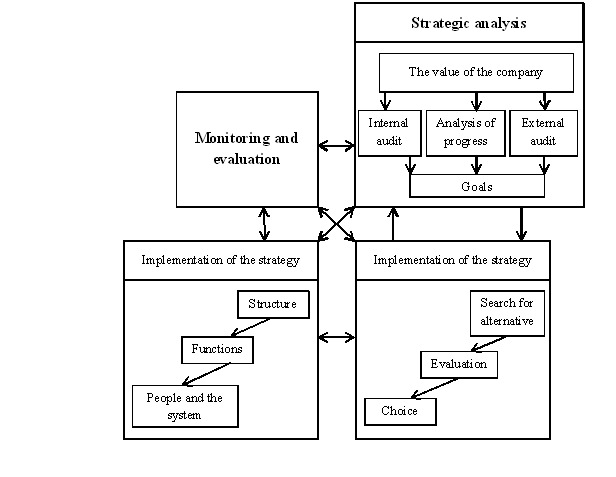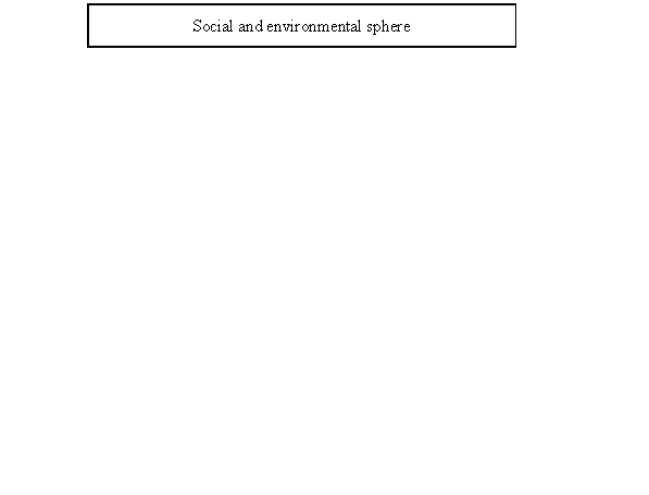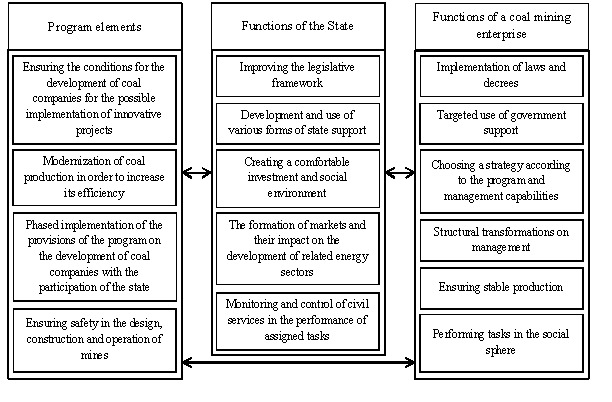Abstract
Content
- Introduction
- 1. Goals, objectives, scientific statements and conclusions
- 2. The main part
- 2.1 Overview of the current industry situation
- 2.2 Finding problems and identifying methods to solve them
- 2.3 Strategic management as the basis of progress
- Conclusions
- List of sources
Introduction
The relevance of a specific study is established by the needs of increasing the efficiency of management by the progress of a coal mining enterprise on the basis of improving the information support complex by laying the composition and content of management information for making logical decisions. According to research on management practices by Ukrainian coal mining companies, a specific research task currently makes great practical sense for the coal sector, because the discrepancy in information support for the set goals is justified by a deterrent to increasing production efficiency and prevents companies from entering the field of sustained activity and progress [1].
The totality of information security of many industries, most often, corresponding to the company's management options, which are developed relative to the conditions of a planned economy, does not demonstrate the necessary indicator of managerial decisions in this phase of progress of the public economy of our country. This fact is demonstrated by the study indicators, which record that almost 45% of the total flow of information used in the management system is considered superfluous, and almost 60% of the information needed to approve informed decisions is not available. According to the results of reliable sources, the problems of proper information support are also typical for foreign companies, the overwhelming number of heads of which consider the information used to be incorrect.
1. Goals, objectives, scientific statements and conclusions.
The idea of the work is to take into account marketing research of the energy and coking coal market, analysis of the prospective development of the mine and quarry fund of the coal basin and the strategic development of the mines of the studied coal company in assessing, predicting the level of competitiveness of enterprises and finding ways to improve it.
The purpose of the work is to determine the competitiveness of coal mining enterprises and to find ways to improve it in coal mines.
The scientific novelty of the study is that:
2. The main part of the work.
On the basis of the transformation of the fuel and energy complex of the state, an energy strategy was laid in early 1994, which maintained the position of the necessary gasification of the public economy. The concept of a gas pause, which was focused mainly on the transformation of social and economic resources, generally did not correspond to the idea of market changes, which resulted in negative results. Based on statistics, in world practice, coal raw materials produce an average of 45% of electricity, in America and Germany up to 55%, in the Russian Federation part of the gas in the electricity level is over 55%, coal accounts for only 14%, and in a number of coal–producing countries - 96 99% [2].
According to an analysis by the International Energy Agency, in the middle of this century, coal will begin to dominate the global fuel and energy balance, whose reserves will be sufficient for seven centuries, while coal accounts for about 85% of the energy potential of organic minerals that are suitable for industrial development. The global use of energy resources will increase 1.5 times to 18.2 billion. tons of conventional fuel, and coal up to 6 billion tons (1.6 times).
2.1. Research and Development Overview
Russia is one of the world leaders in the production and export of coal, it ranks fifth in the world in terms of coal production after China, India, Indonesia and the United States (Russia accounts for about 5% of global coal production) and third in the world in coal exports after Indonesia and Australia (Russia accounts for the international market about 15%) [7].
According to the Ministry of Natural Resources of Russia, coal reserves in Russia are located within the boundaries of 22 coal basins and 146 separate deposits. According to the State Balance of Mineral Reserves, coal reserves in the Russian Federation as of 01.01.2022 of category A+B+C1 amount to 195.9 billion tons, category C2 - 78.4 billion tons. Projected coal resources are: in category P1 - 468 billion tons, P2 - 388 billion tons, P3 - 672.9 billion tons [7].
Coal reserves are estimated at 120.4 billion tons (of which 50.1 billion tons are suitable for coking), brown coal reserves are 146 billion tons. Anthracite reserves are accounted for in the amount of 9 billion tons. About 174.6 billion tons (63%) of coal reserves are suitable for open-pit mining conditions [7].
According to the Central Department of Fuel and Energy, the fund of operating coal mining enterprises in Russia in the first half of 2023 has 189 enterprises, including 54 mines and 135 sections. The total production capacity of coal mining enterprises, according to the Russian Ministry of Energy, at the beginning of 2022 amounted to 523 million tons of coal per year [7].
In Russia, coal is consumed in almost all regions of the Russian Federation. The main consumers of coal in the domestic market are power plants and coke plants. Of the coal-producing regions, the largest producer and supplier of coal is the Kemerovo region - Kuzbass, in the first half of 2023 about half (49.7%) of all coal produced in the country, as well as 61.4% of coking coals, were produced here. Kuzbass is also the largest exporter of Russian coal (54.4%), including for coking.
2.2. Finding problems and identifying methods to solve them
Absolutely every object of management can be described by the existing features, but research management methods provide general laws and ways to influence any controlled entity. Theoretical knowledge, practical skills and the art of management are used by the boss to satisfy his activities and allow him to work out a theory, a set of tools and methods to clarify specific tasks. The classification of goals, management strategies and decision-making with the help of the production team form a single set of responsibilities of the head of any corporation. His ideological philosophy is to understand the enterprise as an accessible system, the activity of which is calculated as the interaction of different structural parts, and the volume of parameters of the influence of external forces on it. This focus of strategic management explains its internal content [5].
The versatility of the definitions of the term strategy and strategic management interprets the complexity of the formulation of its general universal term. Let's assume that the most capacious and appropriate direction of this research is the following definition: a strategy is a basic program of action for the long term, which lays down important goals and objectives of production, sets priorities in the allocation of resources and the sequence of actions performed within specific goals. Strategic management is the implementation of a basic long–term action program (strategy) in a changing environment. As a result, the strategy is able to focus on the main problems and ignore the secondary ones; to figure out the company's actions to establish a mission and significant goals; to give the company stable competitive advantages in global and domestic markets. With the help of strategy, the company's strategic potential is being built. In general, it is represented by the foundation of the firm's practice and the rules of adaptation to external circumstances.
Choosing the line to use is the most important task of strategic management, which requires the use of extraordinary organizational and personnel solutions. Another, even the most effective strategy will not be able to bring results if it is clear and solved by competitors. Therefore, it is necessary to think about a strategy that would most effectively contribute to achieving the goals and objectives set for the company, and also give the company competitiveness and help stake out its place in the service market.
2.3. Strategic management as the basis of progress
Strategic management of coal mining enterprises is the implementation of a comprehensive long–term action program (strategy) in constantly changing environmental conditions, taking into account the specifics of the activities of enterprises in this industry.
Thus, the strategy allows you to focus on the main problems and discard secondary ones; coordinate the company's actions to implement the mission and main goals; ensure the company's strong competitive advantages in global and domestic markets. With the help of strategy, the strategic potential of the company is being created. In general, it represents the basis of the company's practical activities and the process of its adaptation to the external environment [3].
The process of improving the management system of a coal mining enterprise should begin with the development of a strategic concept of the enterprise to determine its goals. For this general concept, which enterprises must comply with, it is necessary to develop a strategy for each structural unit located within the enterprise. In order to achieve this task, we consider it necessary to have mandatory support from the state. The effective development of the coal mining industry is closely linked to the adoption of rational regulatory documents of state influence, both direct and indirect. The measures taken by the state in the field of regulation of subsurface use are necessary to curb the possible decline in the competitiveness of the Russian economy as a whole. With an increase in coal in the fuel balance for the electric power industry, an increase in electricity tariffs is inevitable.
Coal mining companies as objects of management have a number of features characteristic of this industry:
All the above-mentioned features must be taken into account in the process of planning the management strategy of coal companies. As a result of the increased frequency of protracted economic crises, the search for ways out of these crises forced the leaders of most organizations around the world to seriously think about the nature of negative socio-economic processes and phenomena. An attempt had to be made to develop an effective response.
The principles of the new model should form the basis for improving the management of the organization and its development. In terms of operational management, these principles make it possible to understand the nature of organizational and managerial mechanisms for subordinating production to consumption and meeting market demand. The principles of the new management model are especially important for understanding the concept of strategic management, which is based on a combination of systemic and situational approaches. This allows us to understand the structure of the strategy development process, the role and methodology of strategic market segmentation; to orientate oneself in the new methodological tools used in the analysis of strategic alternatives and the choice of strategy, to outline and design a management system for the implementation of the strategy and organizational management structures that allow it to achieve its goals in the context of strategic changes.
The combination of the above concepts and the analysis of various schools of strategic management allows us to build a hierarchical structure of the strategic management model, presented in fig. 1.

Figure 1 – A model of strategic management of a coal mining enterprise
In accordance with the Energy Strategy of the Russian Federation until 2030[2], the main strategic goals of coal industry enterprises are:
In addition, strengthening and expanding Russia's foreign economic positions in the context of transition to a new model of spatial development of the Russian economy can be considered as a global goal. These priorities of the strategic development of coal companies are decisive from the standpoint of the state. And, of course, the main result on a global scale is the satisfaction of municipal, regional and state interests [2].
Due to the industry specifics of coal companies, the block interests of the socio–ecological sphere are of particular interest in the model, which is related to the specifics of coal industry enterprises.
In the course of the activities of coal mining enterprises, the following points are the most significant:
In this regard, in order to strategically manage coal companies, in addition to increasing profits and increasing competitiveness, it is necessary to pay special attention to the two above-mentioned components.Figure 2 shows the main directions for improving the state of the socio-ecological sphere of coal mining companies, which must be implemented in the process of implementing strategic management of such companies.

Figure 2 – The main directions for improving the socio-environmental sphere of coal companies (volume 110 KB; 7 cycles; 7 frames)
As can be seen from Figure 2, in order to meet the interests of production and sustainable development of the company (enterprise), in our opinion, a necessary step is to restructure the organizational structure of management, for which the introduction of technical and technological innovations will be an obligatory element, thereby improving product quality, strengthening market positions and building strategic competitive potential. Compliance with all these positions should accordingly contribute to achieving the ultimate goal of any commercial organization – profit growth.
Communications, intellectual potential, R&D departments, etc. become important factors in creating added value, since most of the cost of most products does not arise at the stage of material production, but during design, marketing, service and quality control.
In accordance with the long-term program for the development of the Russian coal industry for the period up to 2030 [3], the following subprograms attract attention:
The remaining subprograms are designed to create conditions for the implementation of the set goals.
We consider it possible to establish relationships between individual more specific components of the proposed general directions. First of all, this is the relationship between the efforts of the state and coal mining enterprises, in particular the legislative framework and direct and indirect financial assistance from the state, Fig. 3.

Figure 3 – The scheme of interactions between the state and the coal mining enterprise on the implementation of the program elements
The main goal of the above–mentioned program is to realize the potential competitive advantages of Russian coal companies within the framework of implementing a long-term energy policy and transition to an innovative socially oriented type of economic development of the country. The main goal of the first subprogram pursued by the state is to ensure the balanced development and use of the coal raw material base to meet the needs of the country's economy in coal resources and the geopolitical interests of the Russian Federation.
Conclusions
If an enterprise can implement innovations and diversification, then they are considered important parts of establishing their competitiveness and strategic position in the fuel and energy industry. The current prototype of strategic management must be based on various components of managerial impact. He needs to use not only typical methods of control, which are considered personal dependence, authority, motivation, but also completely innovative methods comparable to the use of innovations, creative work of participants, participation in a group, manipulation of skills. It is when these conditions are achieved that it is possible to achieve the desired goal in the management of industrial institutions, as well as coal mining enterprises.
List of sources
- Komissarova M.A. Strategic management of domestic industrial companies using a new paradigm. Bulletin of the South Russian State Technical University (NPI). The Social-economy series. Sciences., No. 2, 2011
- A long-term program for the development of the Russian coal industry for the period up to 2030. [Electronic resource]. – Access mode:https://minenergo.gov.ru....
- Yanovsky A.B. Coal: the battle for the future // Coal. 2020. No. 8. pp. 9-14. 001: 10.18796/0041-5790-2020-8-9-14.
- Petrenko I.E. Coal of Russia - the year of records and anniversaries. // Fuel and Energy Complex of Russia. 2018. No. 2. pp. 26-31.
- Petrenko I.E. Coal of Russia 2018: impressive victories and hidden threats. // Fuel and Energy Complex of Russia. 2019. No. 3. pp. 24-29.
- Tarazanov I.G., Gubanov D.A. The results of the work of the Russian coal industry in 2020 // Coal. 2021. No. 3. pp. 31-43. 001: 10.18796/0041-5790-2021-3-31-43.
- Petrenko I.E. The results of the work of the Russian coal industry in 2021 // Coal. 2022. No. 3. pp. 9-23. 001: 10.18796/0041-57902022-3-09-23.
- Kleiner G.B., Tambovtsev V.L., Kachalov R.M. Enterprise in an unstable economic environment: risks, strategies, security / Under the general editorship of S.A. Panov. – M.: JSC Publishing House Economics, 1997.
- Malyshev Yu.N., Zaidenvarg V.E., Zykov V.M., etc. Restructuring of the coal industry. (Theory. Experience. Programs. Forecast). – M.: Rosugol Company, 1996. – p. 39.
- Holt, R. N. Investment planning: Translated from English / Robert N. Holt, Seth B. Barnes. - M. : Akad. no. gus-i: Delo, 2014. - 116C.
